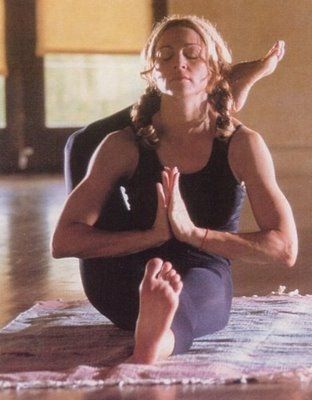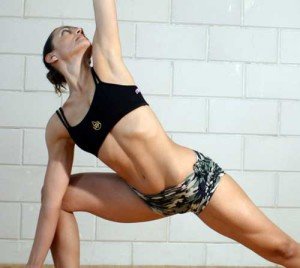
Flow classes are having their moment as the practice du jour at New York City yoga studios. So it’s easy to forget the yoga schools that go their own way, like Ashtanga and Bikram.
Ashtanga enjoys the reputation as the toughest physical yoga practice, and Bikram, a patented hot yoga style, as the most superficial. Despite how they’re characterized, both schools command their own very passionate followings. Here’s what you may—or may not—be missing.
GURU
Ashtanga: K. Pattabhi Jois, from Karnataka (formerly Mysore) in southern India (pictured at right), revived this ancient yoga style, then spent a lifetime teaching it world over. He eschewed wealth and his students remember him as jolly and content. His death last year seals his status as one of yoga’s most venerated gurus.
Bikram: Bikram Choudhury hails from Calcutta (pictured at left). At age 17, a weight-lifting accident crushed his knees and left him crippled. After practicing yoga, he regained the use of his legs. He copyrighted his asana sequence in the 1970s (and has defended it successfully against copy cats), and enjoys showing off his collection of Rolls Royces.
HQ
Ashtanga: Ashtanga Yoga Research Institute is in Mysore, India.
Bikram: Yoga College of India is in Beverly Hills. (Yoga 90210?)
SET SEQUENCE
Ashtanga: Six multi-step series. Most practitioners are at primary or secondary series. Practice progresses according to skill.
Bikram: A set sequence of 26 poses, and 2 breathing exercises, often repeated twice.
ATHLETICISM REQUIRED
Ashtanga: Sun salutations form the basis of the class. Interspersed are nine seated poses and five navasanas (think: killer core work), plus a 10-breath shoulder stand, and a suspended lotus that takes everyone’s breath away.
Bikram: You’re likely to be able to get into these dozen standing-balance poses like half moon, chair pose, and triangle followed by a dozen floor poses such as cobra. The series begins with pranayama and a mini corpse pose is giving halfway through. No inversions.

{{post.sponsorText}}
HEAT
Ashtanga: Comes from the yogi
Bikram: Comes from the 105-degree room
INSTRUCTION AND CORRECTION
Ashtanga: Instructor leads classes and offers corrections. At advanced levels, yogis rely on inner know-how and practice self-correction.
Bikram: Instructor cues poses. Yogis are encouraged to “meet their own eyes” and use the requisite wall of mirrors as a correction tool.
MOVEMENT
Ashtanga: Non-stop
Bikram: Stoppy-starty
DIFFICULTY
Ashtanga: Years of practice is required to acquire all the poses, which increase in difficulty (e.g.: moving into full wheel from mountain pose) and from group to individual practice. Requires strength, flexibility, and endurance.
Bikram: What makes the poses demanding is the heat of the room.

FLACK
Ashtanga: It's too hard. You need a vinyasa practice first, then you start ashtanga.
Bikram: It's too dangerous. The heat makes you think you're more flexible than you are.
THE BRASS RING
Ashtanga: Staying with your breath during the poses
Bikram: Staying in the room
SPIRITUALITY
Ashtanga: Awakenings through the sutras and self-study, chanting and a humbling number of chaturangas.
Bikram: The body is god, and moving through the sequence on your mat is the message and the meditation
THE VIBE
Ashtanga: Serious external practice with serious inner-life investigation
Bikram: Survivor Island yoga: A hot-mess road through delirium, near breakdown, and miraculously still alive at the end
THE FASHION
Ashtanga: Lululemon, Hyde, and Be Present
Bikram: Bra tops, hot pants, and the odd bikini
Loading More Posts...
